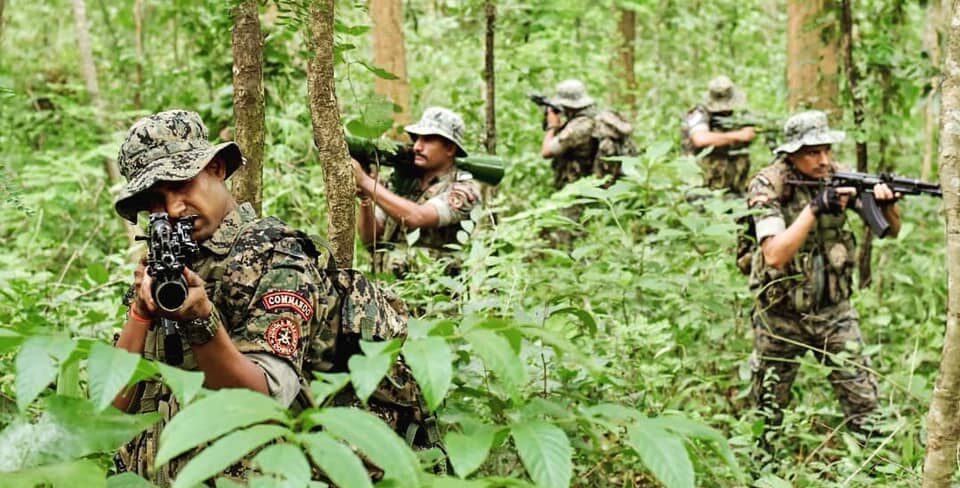
Vivek Shukla
“If Naxalism is an ideology, then work should be done to change it, and if it is a rebellion, then work should be done to crush it.” This is the principle of Prime Minister Modi, who, over the past 11 years, has worked day and night to eliminate the ultra-left movement on both ideological and confrontational fronts. In 2014, when the BJP gave Narendra Modi the responsibility to lead the country, in only his second rally, he went to Bastar and challenged the Maoists, saying, “Accept democracy. This is the best solution to all problems. Bombs, guns, and pistols can cause bloodshed, but they cannot give new life. We need to shed sweat, not blood. We have to make this land green, not red.”
Eleven years later, when the Home Minister announced that Naxalism will be eradicated from the country by 2026, it reflected Prime Minister Modi’s determination.
It is true that the Naxal movement began primarily due to poverty. The Indian government of that time did not pay attention to the development of the states. During those days, jungle mafias, stone mafias, timber mafias, and mineral mafias began to emerge in the country. Gradually, the problem became deep-rooted. Then these mafias started operating their illegal activities openly across inter-state borders. They began to accumulate large quantities of arms by setting up secret bases and then started directly challenging the government. On the strength of weapons, they also began to run their own communist rule in their respective areas.
Needless to say, Naxal leaders also brought political leaders under their pressure and created a cover for themselves in the form of an “intellectual gang.” This intellectual gang began to portray all their bloodshed as a grassroots struggle, where murder and plunder were presented as a reaction against the exploitation of farmers and the poor. Prime Minister Narendra Modi named these so-called intellectuals “Urban Naxals.”
Home Minister Amit Shah did not hesitate to say that the Congress party has been providing protection to these Urban Naxals. The BJP leadership exposed the dangerous agenda of these Urban Naxals to the whole world. Prime Minister Modi also said, “Everyone can see how closely the Congress stands with those who do not have good intentions for India.”
The BJP leadership skillfully used democratic methods to demolish the left-wing ideology. They went into their strongholds and challenged their very ideology. They left no stone unturned in making the public fully aware and ultimately, through the people, marginalized them. In the 2014 elections, when Modi became the prime ministerial candidate, the number of left-wing MPs fell from 24 to 10 in the same year, and then in the 2019 general elections, the number of leftists in the Lok Sabha was reduced to 4. In the face of nationalism, the left-wing ideology began to crumble. The country began to reject the politics of the CPI, CPI-Marxist, and CPI-Marxist-Leninist. There was also a time when, in the 2004 general elections, the leftists had won 61 seats in the Lok Sabha. Now, apart from Kerala, the Left Front is not in a position to stand anywhere. The BJP leadership made an issue of the Left Front’s arrogance, complacency, corruption, and their political violence, and made them politically irrelevant.
Along with achieving a political victory, Prime Minister Modi and Home Minister Amit Shah also undertook the task of eliminating the left-wing blood revolution from the country. First, a strategy was made to separate the traditional supporters of the left from them. Several reform programs were initiated, especially in rural areas. Plans were made to ensure the safety of women. Then, the Modi government formulated a comprehensive plan to deal with Maoist extremism. Local people were empowered to combat the Maoist insurgency.
The Modi government clearly declared that it would maintain a zero-tolerance policy towards Naxalism. A pledge was made to completely eliminate left-wing extremism by March 31, 2026. Then, under the leadership of Home Minister Amit Shah, an integrated plan of security operations, development, and rehabilitation was implemented. Through “Operation Kagar,” hundreds of Naxals were eliminated, and thousands were persuaded to surrender. The results also became apparent. While 126 districts were affected by Naxalism in 2014, only the 6 most affected districts remained in 2024.*
Schools and healthcare centers were extensively expanded in Naxal-affected tribal areas. By adopting a rehabilitation policy for Naxals who laid down their arms, the path was paved for Maoists to rejoin the mainstream. Home Minister Amit Shah has prepared a time-bound program to eliminate Naxalism by adopting a three-tiered formula of force, good governance, and inclusive outreach. The campaign to eliminate those who are not ready to lay down their arms is being carried out day and night. This year alone, more than 200 armed Naxals have been eliminated. In addition, 600 Naxals have also surrendered.
Today, in this era of the Modi government, the control over the Naxal threat can be felt. The same tribals who were forced to support the Naxals are now raising their voices against them. The pace at which work is being done for tribal rights is creating confidence that the Naxal problem will be solved within a fixed timeline. The notion that socialism can only be achieved through weapons is being successfully challenged. PM Modi’s appeal to ‘make the earth green, not red’ is coming to fruition.







